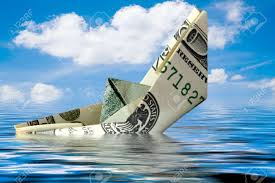Vermont lakeside communities would lose $16.8 million in economic activity and 200 full-time jobs - in July and August alone - for every one-meter (three-foot) decrease in water clarity according to a study recently released by the University of Vermont and the Lake Champlain Basin Program. The study looked at home prices, rooms and meals taxes, and a tourism model to reach the conclusion.
Waterfront property typically sells for more than property far from the water. The researchers found an increase in value of 30 to 49% for homes located within 100 meters of the water compared to homes farther away. Values also increased if the lake was more visible from the property.
However, the clarity of the water also affected value. A single family home on the lake increased 3% in value when water was clearer, while seasonal homes increased in value by 37%. In some places, impacts of poor water quality have already taken a toll on property values. On St. Albans Bay in Georgia, VT, the assessment of 37 properties was reduced by $50,000 each in 2015 representing a net loss of more than $1.8 million from the town's tax rolls.
The researchers also constructed a model to assess the impacts of tourism on the regional economy. They found that every dollar of lake-related tourism generated an additional $1.19 in additional value including labor income, tax revenue, and profits. The Vermont Agency of Commerce and Community Development estimated that approximately $300 million was spent "in and around Lake Champlain" in 2013 alone.
In a press release, one of the study's authors Brian Voigt noted, "These findings show that water quality in Lake Champlain and its surrounding basin is more than just an environmental concern. It's a major economic issue that affects homeowners, businesses and employees."
There are trade-offs with increasing water clarity. As clarity increases, sunlight reaches to greater depths providing more area in which plants can grow and an earlier start to the growing season. Aquatic weeds can impair boating and swimming, but generally improve fishing.
So how much change in water clarity can actually be expected? There was a 3.65 meter difference between the clearest water evaluated in the analysis and the murkiest. Thus a 1 meter increase or decrease in water clarity would represent a substantial change. The researchers suggested that meeting the 34% phosphorus reduction goals called for in the EPA's recent clean-up plan would increase water clarity by 1.67 meter.
We are already headed in the right direction on this measure for most of the lake. Water clarity along the main axis of the lake over the past four decades has improved, based on data published in the Journal of Great Lakes Research (December 2012). Increases ranged between 26 and 48% in the Main Lake, Shelburne Bay, Cumberland Bay, Grand Isle, and Isle LaMotte. Water transparency in the South Lake more than doubled. In the Northeast Arm, Mallets Bay and St. Albans Bay there have been no significant trends. In Missisquoi Bay the trend has been in the wrong direction, with a 25% decrease, principally since 1980.
The authors do note in their conclusion that the price signal of water clarity likely has limits and, "at some level of water quality improvement the marginal return would trend towards zero." Thus, the impacts of water quality improvements on the economy may be limited to areas of the lake where conditions are the worst, while areas of the lake where clarity has increased in recent years would be unaffected.
Placing an economic value on environmental services is always challenging. We tend to take for granted all the ways in which our environment benefits us. As Voigt notes, quantifying Lake Champlain's water woes gives state and federal leaders economic data to justify investments in solutions. Click here to download a PDF of the study.
